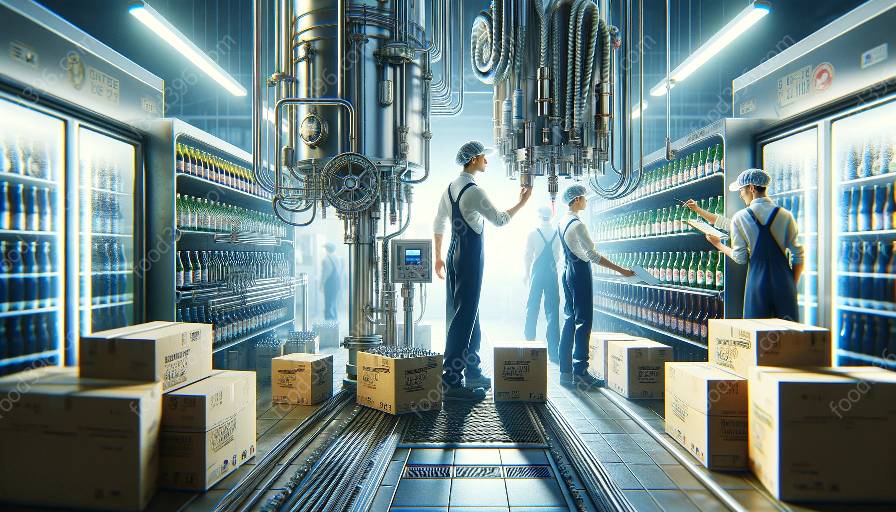Food and beverage safety regulations are crucial for ensuring the quality and safety of the products that consumers rely on. In the context of beverage safety and sanitation, these regulations play a vital role in safeguarding public health and building trust in the industry. Let's delve into the intricacies of food and beverage safety regulations and their impact on the beverage studies arena.
The Role of Food and Beverage Safety Regulations
Food and beverage safety regulations encompass a wide range of guidelines and measures designed to mitigate the risk of foodborne illnesses and ensure the overall safety and quality of products. These regulations are established and enforced by government agencies, such as the Food and Drug Administration (FDA) in the United States, and similar bodies in other countries around the world.
One of the primary objectives of these regulations is to protect consumers from potential harm caused by unsafe or contaminated food and beverages. By setting clear standards for production, handling, and distribution, these regulations aim to minimize the occurrence of foodborne diseases and maintain the integrity of the food and beverage supply chain.
Impact on Beverage Safety and Sanitation
When it comes to beverage safety and sanitation, adherence to food and beverage safety regulations is paramount. These regulations govern every aspect of beverage production and distribution, including facility hygiene, ingredient sourcing, equipment maintenance, and packaging standards.
For example, in the context of sanitation, regulations dictate strict cleanliness and hygiene protocols for beverage manufacturing facilities. This includes regular sanitation of equipment, proper waste disposal, and the implementation of hazard analysis and critical control points (HACCP) to prevent contamination.
Additionally, beverage safety is heavily influenced by regulations that dictate the handling and storage of raw materials and finished products. Proper labeling, refrigeration requirements, and hygiene practices during transportation are all crucial elements governed by these regulations.
Key Guidelines for Beverage Safety and Sanitation
For professionals in the beverage industry, understanding and complying with food and beverage safety regulations is essential. Let's explore some of the key guidelines that directly impact beverage safety and sanitation:
- Hazard Analysis and Critical Control Points (HACCP): This systematic preventive approach addresses physical, chemical, and biological hazards in production processes to ensure the safety of beverages.
- Good Manufacturing Practices (GMP): These guidelines outline the minimum requirements for the methods, facilities, and controls used in the production of beverages, emphasizing cleanliness and safety.
- Quality Control and Testing: Regulations often mandate rigorous quality control measures, including testing for contaminants, pathogens, and adulterants to guarantee the safety and integrity of beverages.
- Labeling and Packaging Standards: Beverage packaging must adhere to specific regulations regarding materials, labeling accuracy, and information related to allergens and nutritional content.
Relation to Beverage Studies
Food and beverage safety regulations are not only practical considerations for industry professionals but also pivotal topics within beverage studies. Students pursuing beverage-related education and research must grasp the significance of these regulations and their influence on the broader industry landscape.
From food science to business management, understanding the regulatory framework surrounding food and beverage safety is essential for aspiring professionals. Beverage studies programs often include coursework that delves into the legal and regulatory aspects of the industry, equipping students with the knowledge needed to navigate compliance and quality control.
Further, research within the beverage studies domain frequently explores the impact of regulations on consumer behavior, market trends, and innovation. By examining the intersection of regulations and consumer preferences, scholars contribute to the ongoing evolution of beverage safety and quality measures.
Conclusion
Food and beverage safety regulations are fundamental cornerstones of the industry, directly shaping beverage safety, sanitation practices, and academic studies. Given their impact on public health and consumer confidence, these regulations continue to evolve in response to emerging risks and advancements in food science and technology. By embracing and upholding these regulations, the beverage industry can uphold its commitment to delivering safe, high-quality products while fostering a culture of innovation and compliance.

